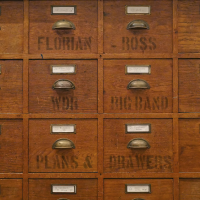Cromford Mill, the world’s first successful water powered cotton spinning mill, was built in 1771 by Sir Richard Arkwright. From then until around 1790, he continued to develop the mills, warehouses and workshops, which now form the Cromford Mills site. Considered as a whole it presents a remarkable picture of an early textile factory complex.
However, problems with the water supply around 1840 imposed severe limitations on textile production at Cromford Mill and the buildings were put to other uses. These included a brewery, laundries, and cheese warehousing.
Finally, in 1922, the site was used as a colour works, producing colour pigments for paints and dyes. It is remarkable that so many of the buildings survived this use and, by 1979 when the Cromford Colour Works abandoned the site, many of them were heavily contaminated with lead chromate.
read more
Cromford Mill, the world’s first successful water powered cotton spinning mill, was built in 1771 by Sir Richard Arkwright. From then until around 1790, he continued to develop the mills, warehouses and workshops, which now form the Cromford Mills site. Considered as a whole it presents a remarkable picture of an early textile factory complex.
However, problems with the water supply around 1840 imposed severe limitations on textile production at Cromford Mill and the buildings were put to other uses. These included a brewery, laundries, and cheese warehousing.
Finally, in 1922, the site was used as a colour works, producing colour pigments for paints and dyes. It is remarkable that so many of the buildings survived this use and, by 1979 when the Cromford Colour Works abandoned the site, many of them were heavily contaminated with lead chromate.
It was generally believed the mills had reached the end of their useful life and must be demolished – all of the key buildings had fallen into disrepair and many of the historic features of the site, including the principal watercourse, had been obliterated by modern development. So degraded had the site become that the Local Authorities believed it had lost too much of its original integrity that it was no longer historically important.
It was not until the modern buildings had been cleared away and new historical and archaeological research had been completed that the true value of the site was recognised. This reappraisal led to an upgrading of the listing and the entire site now enjoys Grade I status and is part of the Derwent Valley Mills World Heritage Site.
show less
















